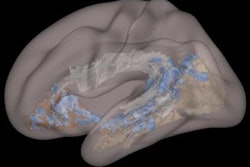Two-way communication between spine surgeons and radiologists also can help create reports that improve clinical outcomes for patients, added study co-author Dr. Vidur Mahajan, associate director of Mahajan Imaging in New Delhi.
Mahajan and colleagues created an anonymous, online survey with input from five spine surgeons to gauge what information matters most to them when considering treatment for their patients. The poll included questions related to the measurement of the spinal canal, as well nerve root impingement, annular fissures, and a host of other abnormalities. It also covered the importance of including such data in MRI reports.
In addition, the researchers wanted to know what report format was most preferred by spine surgeons. For example, should there be information on every level of the spine or only the important locations? Would a pain chart diagram help?
The group received responses from two dozen subspecialist spine surgeons with an average of 14 years of experience. Most respondents preferred that the report only include the location(s) of the pain along the spine; one-third wanted to know the status at every level. One-third of the respondents requested a pain chart diagram.
As one might expect, MRI was the most popular modality for presurgical assessment of degenerative disk disease, followed closely by x-ray. Fewer than 10% of the respondents would opt for CT.



















